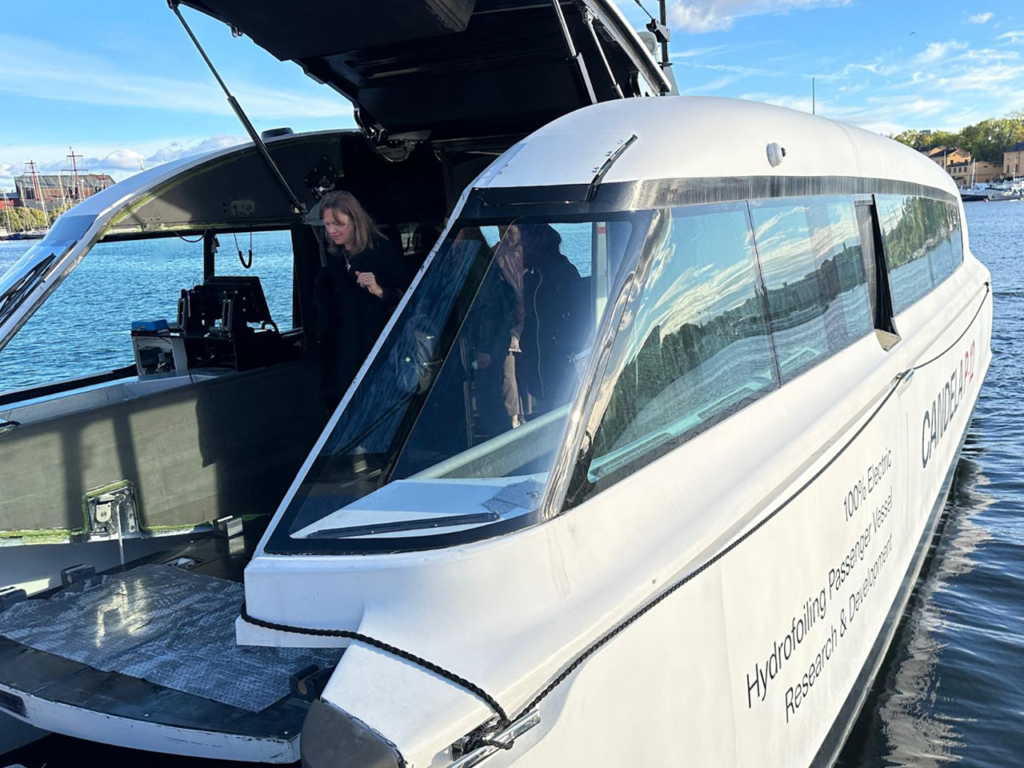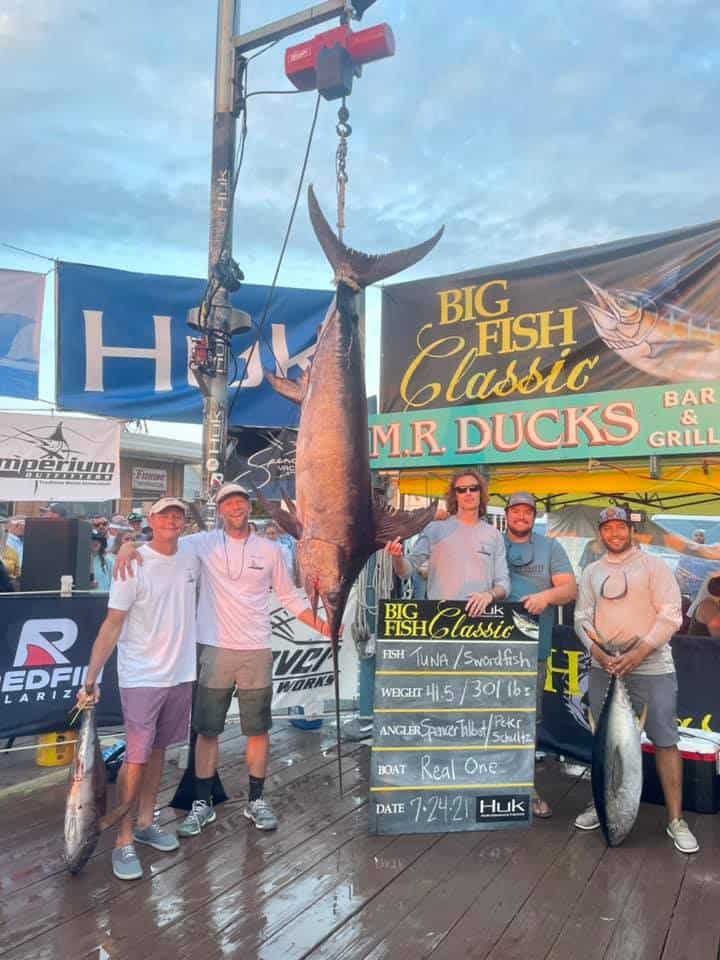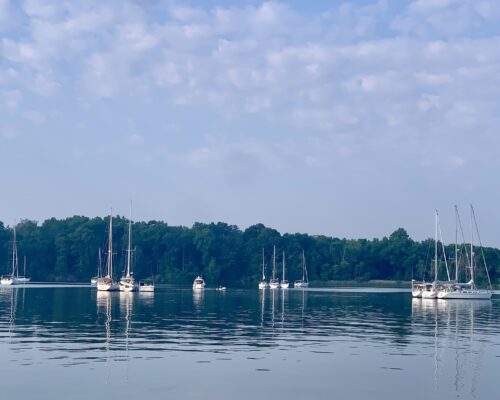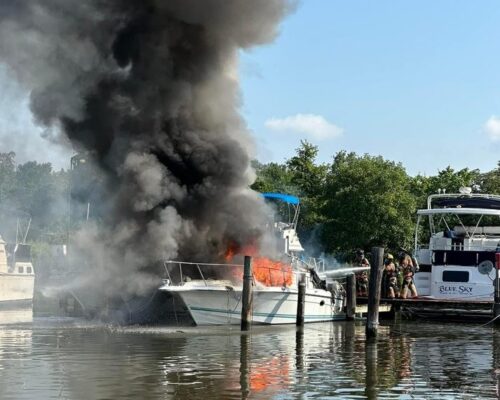Armed with a new federal grant of nearly $4 million, Anne Arundel County, Maryland, is pushing forward with its electric passenger ferry program. First stop: Stockholm, Sweden.
In late September, the county was awarded funding from the Federal Transit Administration (FTA) for Fiscal Year 2024. The $3.895 million grant comes from the FTA’s nearly $100-million Electric or Low-Emitting Ferry Pilot Program.
Under the program, ferries would need to use alternative fuels that operate with reduced emissions or zero onboard emissions. The approved alternative fuels could include blends with at least 85 percent methanol, denatured ethanol, and other alcohols; natural gas; liquified petroleum; hydrogen; electricity; fuel derived from biological materials; or any other fuel that yields “substantial energy security and environmental benefit,” according to the FTA.
Anne Arundel County’s FTA funds are to be used to buy electric vessels to start a new ferry service between Annapolis, Baltimore City, and Matapeake Park on Kent Island. The service would accommodate commuters, residents and visitors and would use existing port facilities at all three locations.
In the wake of this funding being awarded, a delegation of representatives from Annapolis and Anne Arundel County traveled to Sweden, an archipelago where ferries are used regularly and “clean” environmental practices are high priorities.
The Sweden Study Tour has stretched over a week and includes public officials from the state, county, and city, like County Executive Steuart Pittman and Annapolis Mayor Gavin Buckley, who has championed a local electric ferry service for years.
Sweden is home to Candela, a boatbuilder who makes electric foiling vessels including a relatively new passenger ferry model. Candela premiered a smaller recreational powerboat, the Candela C-8, at the 2023 Annapolis Powerboat Show. They returned this past weekend for the 2024 Powerboat Show—the same week that Maryland officials were touring Candela’s manufacturing facility back in Sweden.
In a letter to constituents from Sweden, Anne Arundel County Executive Steuart Pittman recounted the impressive ways the country is using sustainable practices, with public transit, bicycles and walking outweighing cars as primary modes of transportation. He learned that in Sweden, energy production is 40% hydro, 29% nuclear, 21% wind, 8% CHP facilities from waste incineration, and 2% solar.
“We felt like we were visiting the future,” Pittman said.
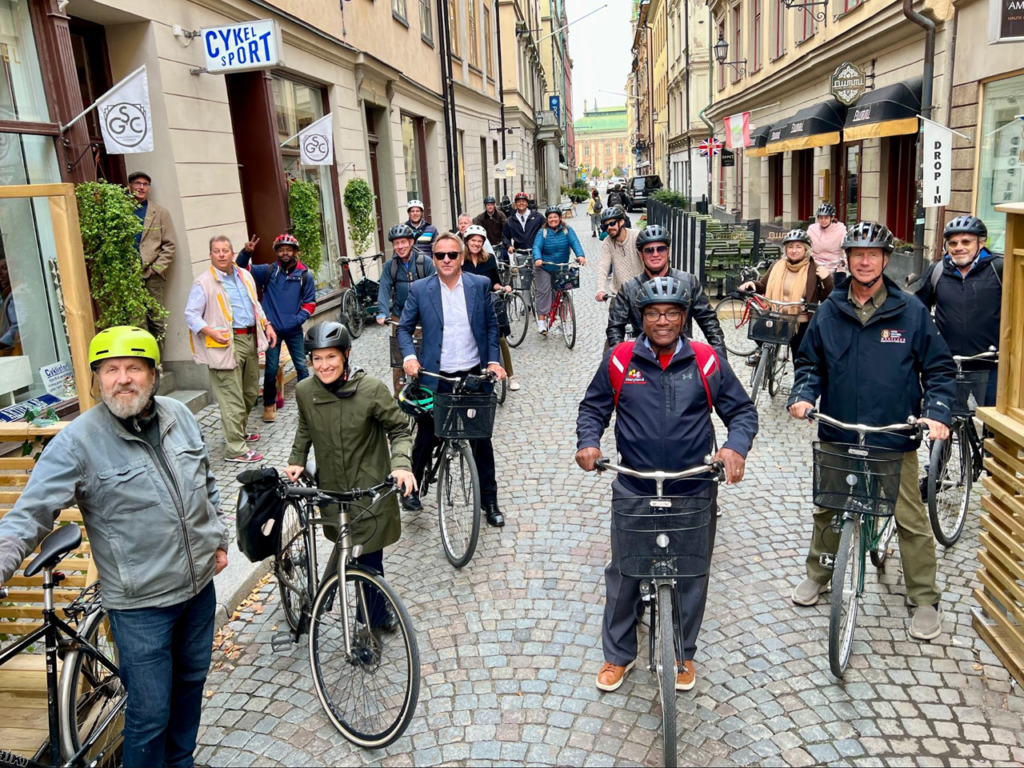
Indeed, Sweden is a global leader in sustainability efforts, with a lofty goal of net zero emissions by 2045.
Pittman believes the local leaders’ visit will inspire them to do things like “invest in electric ferries like the futuristic hydrofoil version that we visited at the Candela factory.”
Sweden has been experimenting with electric ferries for more than a decade, launching its first fully operational service in 2014. Since then, its government has invested in expanded electric ferry solutions. Maryland’s Sweden Study Tour was able to meet with experts and see these ferries in action.
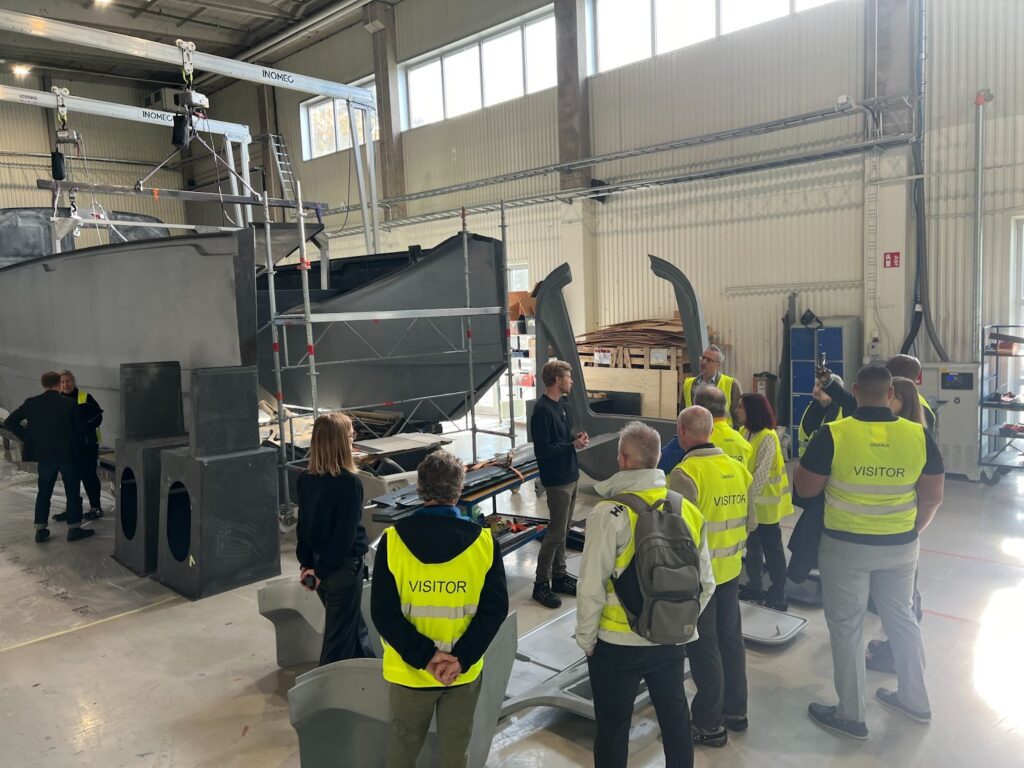
While Anne Arundel County is not yet actively seeking bids for a ferry builder, the county and Annapolis mayor’s office have met multiple times with Candela. The company’s P-12 Shuttle can accommodate 25-30 people depending on layout. It can cover the same distance in 25 minutes that a typical shuttle could cover in 55 minutes. Along with using cleaner energy, Candela says its foiling technology creates almost no wake, reducing shoreline erosion and making nearby sailboaters much less grumpy.
At the Powerboat Show, we caught up with Candela representatives, who told us they expect to build Hull #3 for Saudi Arabia by the end of October. They already have two orders in the United States and are working to establish a manufacturing operation in the U.S. It will be at least 1.5-2 years before the first American delivery. While the company isn’t saying exactly where those ferries will be delivered, they have had interest from both coasts.
Candela believes their vessel would be a good fit for our region. They liken the Chesapeake Bay to an “inland ocean” much like to Sweden’s chain of islands. The Bay is large, but doesn’t see offshore conditions. Compared to Sweden, Candela representatives tell me, the Bay is “underutilized from a transit perspective.” The company envisions a small fleet of 39-foot P-12s, so that one vessel could always be charging while another is running.
Still, no decisions have been made about what kind of ferry the county will invest in or who will manufacture it. Renesha Alphonso, spokesperson for the county executive, says, “The County has not prepared a procurement solicitation or a scope of work to procure ferries. We are not considering any manufacturers as that would be premature.”
Th county’s initial ferry plan is part of a larger goal to bring passenger ferries to waterfront towns all over the Maryland section of the Chesapeake Bay. In August, we reported on the completion of a feasibility study among five counties for a recreational passenger ferry. The counties have a vision to ferry passengers from popular Bay ports like Annapolis and Baltimore to more difficult-to-reach towns like Crisfield and St. Mary’s City, boosting tourism and better connecting the Bay community.
A statewide ferry system is still a long way away, however. The five-county Chesapeake Bay Passenger Ferry Consortium must conduct “readiness assessments” and find millions in funding.

